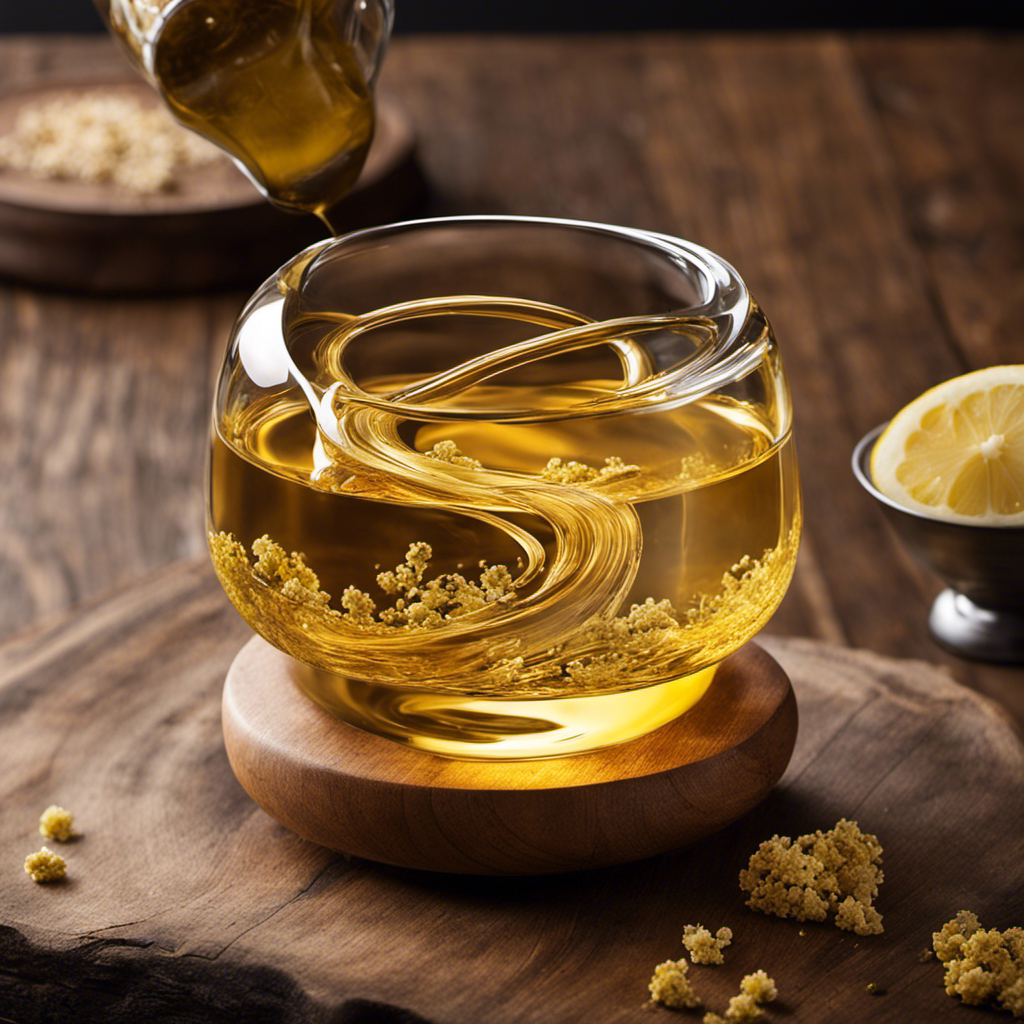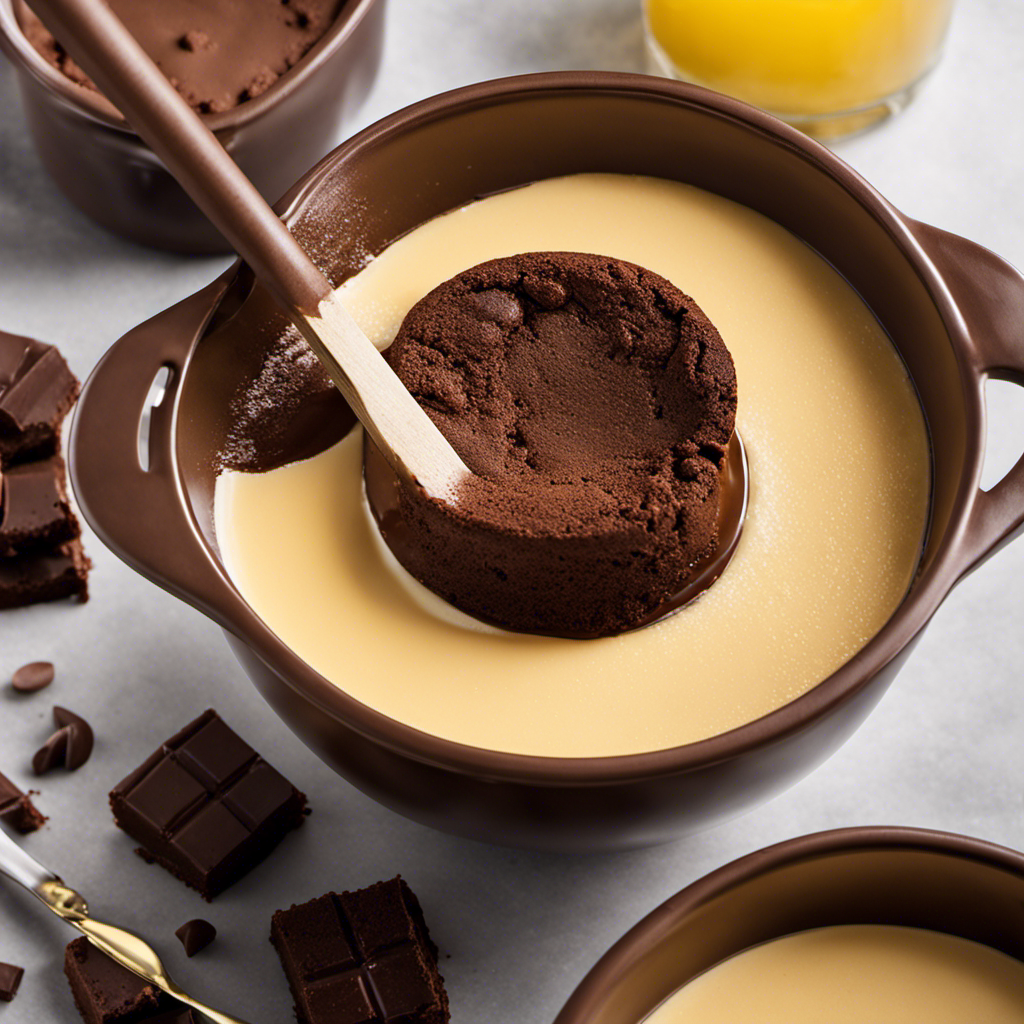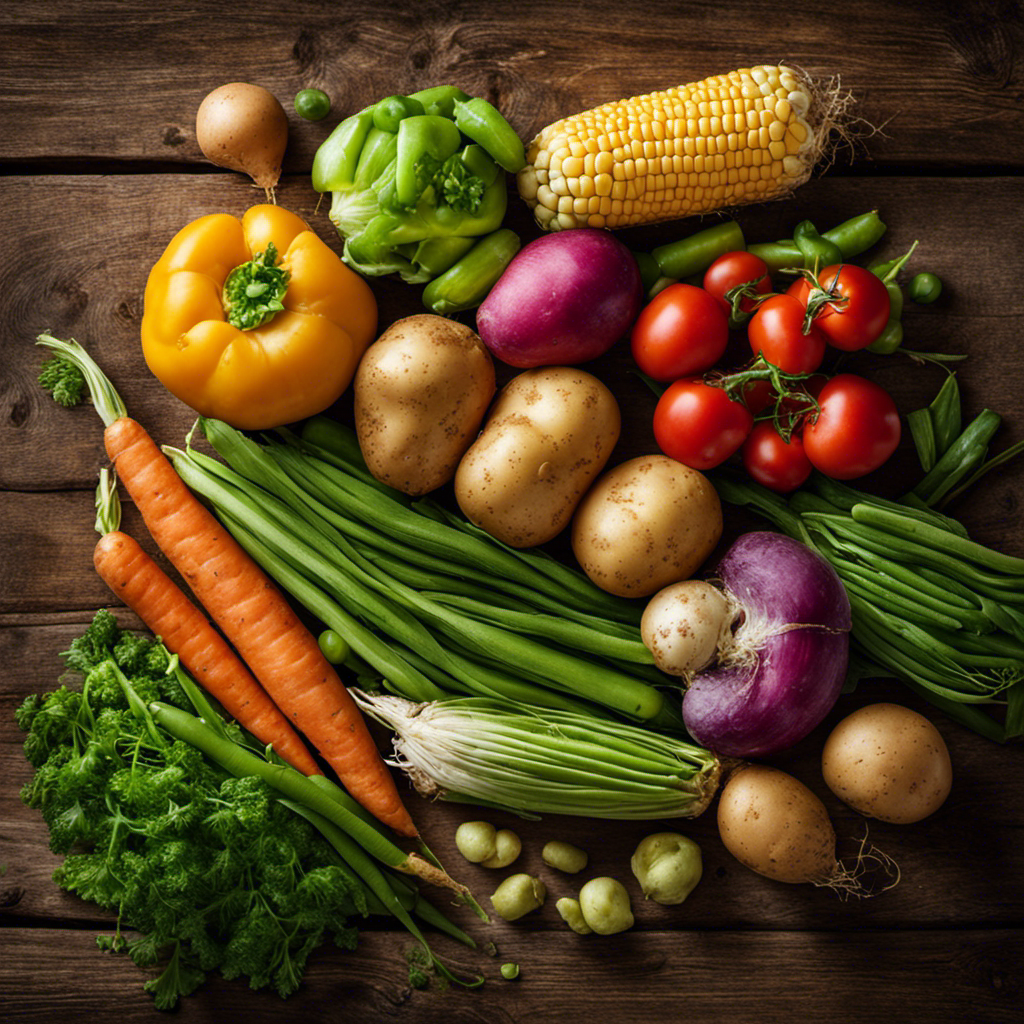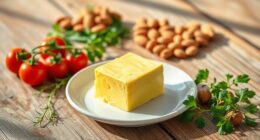Oh, butter chicken, the cherished dish that has won over the hearts and taste buds of food lovers globally.
Who would have thought that this delectable creation, with its rich and creamy tomato-based sauce, would have such a fascinating origin story?
As I delved into the history of butter chicken, I discovered a tale filled with vibrant flavors, cultural influences, and culinary evolution.
So, buckle up and join me on this journey as we unravel the intriguing question: where does butter chicken come from?
Key Takeaways
- Butter chicken originated in the 1950s in Delhi, India and was created by a restaurant owner to repurpose leftover tandoori chicken.
- It is simmered in a tomato-based gravy with generous amounts of butter and cream, and key spices include garam masala, turmeric, cumin, coriander, and Kashmiri red chili powder.
- Different regions in India have their own unique variations of butter chicken, with North India known for its rich and creamy gravy, and South India having spicier flavors with curry leaves and black pepper.
- Butter chicken has become popularized and spread globally, with adaptations like Tikka Masala in British-Indian cuisine, and it has sparked debates about cultural appropriation and the dilution of authentic recipes.
Historical Origins
Butter chicken, which is believed to have originated in the Indian subcontinent, is a popular dish that you can enjoy at many Indian restaurants. The cultural significance of butter chicken cannot be overstated. It has become an iconic dish that represents the rich and diverse culinary heritage of the Indian subcontinent.
This dish has evolved over time, undergoing several evolutionary changes to suit the tastes and preferences of different regions and communities. Originally known as Murgh Makhani, butter chicken was created in the 1950s in Delhi, India. It was invented by a restaurant owner who repurposed leftover tandoori chicken by simmering it in a tomato-based gravy with generous amounts of butter and cream.
This innovative creation became an instant hit and has since gained international recognition as a staple in Indian cuisine.
Traditional Ingredients
When it comes to the flavors and spices used in traditional butter chicken, there is a rich and diverse range that adds depth and complexity to the dish.
The key spices include garam masala, turmeric, cumin, coriander, and Kashmiri red chili powder, which give the curry its distinctive taste.
Additionally, regional variations play a significant role in shaping the flavors of butter chicken, with different parts of India having their own unique twist on the dish.
Furthermore, the influences that have shaped butter chicken over the years are also worth exploring, as they provide insight into its evolution and popularity across different cultures.
Spices and Flavors Used
The spices and flavors used in butter chicken give it its distinctive and aromatic taste. The combination of Indian spices and cooking techniques create a rich and flavorful dish that is loved by many. Here are three key elements that contribute to the deliciousness of butter chicken:
-
Garam masala: This essential blend of spices, including cinnamon, cardamom, cloves, and cumin, adds warmth and depth to the dish.
-
Fenugreek: Also known as methi, fenugreek leaves are commonly used in Indian cooking to add a slightly bitter and nutty flavor.
-
Tandoori masala: This spice mix, typically made with red chili powder, coriander, cumin, and other spices, gives the chicken a vibrant color and smoky flavor.
Regional Variations and Influences
One of the regional variations and influences in butter chicken is the use of different spices and flavors based on the local culinary traditions. Cultural influences play a significant role in shaping the distinct flavors of butter chicken across different regions.
In North India, for example, the dish is known for its rich and creamy tomato-based gravy, flavored with a blend of aromatic spices like garam masala, cumin, and coriander.
In South India, on the other hand, the flavors tend to be spicier, with the addition of ingredients like curry leaves and black pepper.
Additionally, butter chicken has also become a popular dish in fusion cuisine, with chefs experimenting with different ingredients and techniques to create unique and innovative versions of the classic dish.
These regional variations and cultural influences add depth and diversity to the beloved butter chicken.
Evolution of the Recipe
To understand the evolution of the recipe, you should explore how different cultures and regions have influenced the flavors and techniques used in butter chicken. This popular dish has undergone various transformations over time, resulting in a rich and diverse culinary heritage.
Here are some key factors that have shaped the evolution of butter chicken:
-
Cultural influences: Butter chicken draws inspiration from the traditional Indian cuisine, specifically the Mughlai cuisine of North India. The rich and creamy gravy is reminiscent of the Mughlai style of cooking, which emphasizes the use of aromatic spices, yogurt, and cream.
-
Regional variations: Different regions in India have put their unique spin on butter chicken, incorporating local ingredients and flavors. For example, in Punjab, the dish is known for its smoky and robust flavors, with the addition of kasuri methi (dried fenugreek leaves) and tandoori chicken.
-
Modern twists: Chefs and food enthusiasts have also contributed to the evolution of butter chicken by experimenting with innovative ingredients and techniques. From vegan alternatives to fusion variations, there is no shortage of modern twists on this classic dish.
With a solid understanding of the influences on taste and the modern twists, let’s now explore the regional variations that have emerged in different parts of India.
Regional Variations
When it comes to Indian cuisine, there is no shortage of delicious regional variations that showcase the diverse flavors and techniques of the country. From the spicy Chettinad dishes of South India to the rich and creamy Mughlai cuisine of the North, each region has its own unique twist on popular Indian dishes.
Additionally, Indian cuisine has also found its way onto international menus, leading to adaptations and influences from different cultures around the world.
Popular Indian Variations
There’s no denying that butter chicken is a beloved dish in India, with popular variations found throughout the country. It is a staple in Indian cuisine and has become a favorite worldwide. The rich and creamy tomato-based gravy, combined with tender chicken pieces, makes it a truly irresistible dish.
When it comes to regional cooking techniques, butter chicken has adapted to the diverse culinary traditions of India. Each region has put its own unique twist on this classic dish, resulting in a wide array of flavors and preparations.
In the northern parts of India, the dish is often prepared using tandoori-style cooking, where the chicken is marinated in yogurt and spices before being grilled in a clay oven. In the southern regions, a fusion cuisine approach is taken, blending traditional Indian spices with local ingredients to create a distinct flavor profile. And in the western parts of India, butter chicken is often made using a combination of Indian and Persian cooking techniques, resulting in a rich and aromatic dish.
No matter the regional variation, one thing is for sure – butter chicken is a true crowd-pleaser and a must-try for any food lover.
International Adaptations and Influences
International adaptations and influences have transformed butter chicken into a globally recognized and enjoyed dish. This culinary fusion has taken the traditional Indian recipe and infused it with flavors from different cultures around the world. As a result, butter chicken has become a versatile dish that can be customized to suit various palates.
| International Adaptations | Influences |
|---|---|
| Tikka Masala | British |
| Murgh Makhani | North India |
| Murgh Makhanwala | Punjabi |
One of the most popular international adaptations of butter chicken is Tikka Masala. This British-Indian dish features marinated chicken cooked in a tomato-based sauce with spices. Another variation, Murgh Makhani, hails from North India and is known for its creamy and buttery texture. Finally, Murgh Makhanwala, a Punjabi version, adds a tangy twist with the addition of yogurt and lemon juice. These international adaptations and influences have not only expanded the reach of butter chicken but have also added new dimensions to its taste and appeal.
Unique Regional Ingredients
After exploring the international adaptations and influences of butter chicken, let’s now delve into the unique regional ingredients that contribute to its distinct flavors.
One of the fascinating aspects of butter chicken is how it incorporates indigenous flavors from different regions. Here are some interesting facts to pique your interest:
- The use of aromatic spices like fenugreek, cardamom, and cumin adds depth and complexity to the dish.
- Region-specific ingredients such as Kashmiri red chili powder or kasuri methi (dried fenugreek leaves) give butter chicken its unique regional variations.
- Culinary diversity plays a crucial role in shaping the flavors of butter chicken, with each region showcasing its own distinct twist on the classic recipe.
Popularization and Globalization
If you’re a fan of Indian cuisine, you’ve probably noticed how butter chicken has become popularized and spread globally. Its rich and creamy tomato-based sauce, paired with tender pieces of chicken, has won the hearts of food enthusiasts worldwide. The popularity of butter chicken can be attributed to the impact of globalization and cultural appropriation. As Indian cuisine gained popularity, it was adapted and modified to suit different palates and preferences. This has led to the creation of various versions of butter chicken that may differ from the traditional recipe. While the spread of butter chicken has introduced people to the flavors of Indian cuisine, it has also sparked debates about cultural appropriation and the dilution of authentic recipes.
| Positive Impact | Negative Impact |
|---|---|
| Increased awareness and appreciation of Indian cuisine | Cultural appropriation and dilution of traditional recipes |
| Economic benefits for Indian restaurants and exporters | Misrepresentation of Indian culture |
| Culinary innovation and fusion with different cuisines | Lack of understanding and respect for the origins of the dish |
| Cultural exchange and cross-cultural understanding | Commercialization and commodification of Indian food |
| Promotion of diversity and inclusion in the culinary world | Exploitation of Indian culinary traditions for profit |
Cultural Significance
When it comes to understanding the cultural significance of this dish, you might be surprised to learn about the historical roots and symbolic meanings associated with butter chicken in Indian cuisine.
Butter chicken, also known as Murgh Makhani, is a classic dish that has deep roots in the culinary traditions of India.
Here are three interesting facts about the cultural significance of butter chicken:
-
Fusion Cuisine: Butter chicken is a perfect example of fusion cuisine, blending the rich flavors of Indian spices with a creamy tomato-based sauce. This combination represents the coming together of different culinary traditions, creating a unique and delicious dish.
-
Symbolic Meaning: Butter chicken is often associated with celebration and special occasions in Indian culture. It is commonly served at weddings, festivals, and family gatherings, symbolizing abundance, prosperity, and indulgence.
-
Historical Roots: Butter chicken originated in the city of Delhi in the 1950s. It was created by a chef named Kundan Lal Gujral, who experimented with leftover tandoori chicken and developed this iconic dish. Today, it has become one of the most popular and beloved dishes in Indian cuisine, both in India and around the world.
Frequently Asked Questions
How Is Butter Chicken Typically Served?
Typically, butter chicken is served with naan or rice. It is a popular dish in Indian cuisine, but there are also variations of it around the world. Now, let’s delve into the history and origins of butter chicken.
Are There Any Vegetarian Versions of Butter Chicken?
Yes, there are vegetarian alternatives to butter chicken. Paneer butter masala is a popular Indian curry that replaces chicken with paneer, a type of cheese. It is equally flavorful and satisfying.
What Is the Difference Between Butter Chicken and Chicken Tikka Masala?
The difference between butter chicken and chicken tikka masala lies in their preparation and flavor profiles. Butter chicken originated in India and is known for its creamy tomato-based sauce, while chicken tikka masala has a spicier and tangier taste with a yogurt-based marinade.
Can Butter Chicken Be Made With Other Meats Besides Chicken?
Yes, butter chicken can be made with other meats besides chicken. Traditional recipes use lamb or fish as alternatives. These variations still incorporate the rich and flavorful buttery tomato sauce that is characteristic of butter chicken.
Is Butter Chicken Considered a Healthy Dish?
Butter chicken is a delicious dish, but it is not considered healthy. It is high in calories and not suitable for a low-fat diet. It’s important to enjoy it in moderation.
Conclusion
After delving into the historical origins, traditional ingredients, evolution of the recipe, regional variations, popularization, and cultural significance of butter chicken, I am left in awe of its rich heritage.
The tantalizing flavors and aromas that emanate from this dish have captured the hearts and taste buds of people all around the world.
However, there is one lingering question that remains unanswered: where exactly did this delectable creation come from?
The suspense surrounding the true origins of butter chicken adds a layer of mystery and intrigue to its story, making it all the more fascinating.










